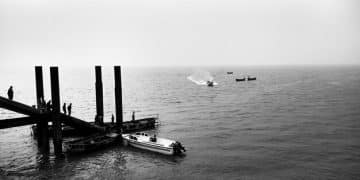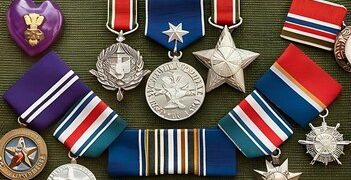D-Day: Tactical Innovations and the Normandy Landings
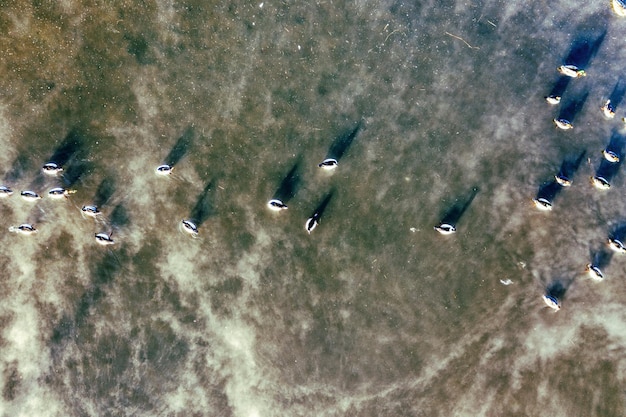
D-Day, the Allied invasion of Normandy on June 6, 1944, hinged on a series of tactical innovations, including amphibious warfare strategies, deception operations, and specialized engineering units, that collectively secured the crucial beachheads.
The success of D-Day, or Operation Overlord, was far from guaranteed. The **D-Day: Examining the Tactical Innovations That Secured the Normandy Beaches** reveals the meticulous planning and groundbreaking strategies that allowed Allied forces to establish a foothold in occupied Europe.
Planning and Preparation for D-Day
The invasion of Normandy required an unprecedented level of logistical and strategic preparation. Months were spent meticulously planning every aspect of the operation, from troop deployment to equipment supply, ensuring that the Allied forces were as prepared as possible for the daunting task ahead.
Intelligence Gathering and Analysis
Accurate intelligence was crucial for the success of D-Day. Allied forces gathered information on German defenses, troop movements, and terrain conditions. This intelligence was analyzed to identify weaknesses in the German lines and to determine the best landing sites.
The Role of Special Operations
Special operations played a vital role in preparing the way for the invasion. Units such as the British Special Air Service (SAS) and the US Special Forces conducted reconnaissance missions, sabotaged German infrastructure, and disrupted enemy operations behind enemy lines.
- Disrupting enemy communication networks.
- Demolishing key bridges and railways.
- Providing real-time intelligence.
The meticulous planning and intelligence gathering laid the foundation for the tactical innovations that would be deployed on D-Day.
Amphibious Warfare Innovations
D-Day was one of the largest amphibious assaults in history, requiring innovative techniques to overcome the challenges of landing troops and equipment on heavily defended beaches. Several key innovations were developed to facilitate the landings and minimize casualties.
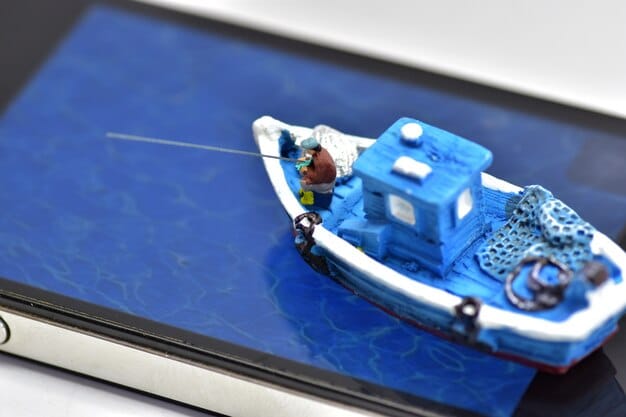
The Development of Specialized Landing Craft
Specialized landing craft, such as the Higgins boat and the Landing Craft Tank (LCT), were essential for transporting troops and equipment to the beaches. These vessels were designed to navigate shallow waters and deliver their payloads directly onto the shore.
DD Tanks: Swimming Shermans That Provided Fire Support
Duplex Drive (DD) tanks were Sherman tanks modified with inflatable flotation screens and propellers, allowing them to “swim” ashore and provide immediate fire support to the troops. These tanks helped suppress German defenses and provided crucial firepower during the initial stages of the landings.
- Increasing the mobility of armored units.
- Providing crucial early fire support.
- Boosting the morale of landing troops.
These amphibious warfare innovations, while not without their limitations, proved vital in overcoming the initial challenges of landing on the Normandy beaches, allowing Allied forces to gain a foothold and begin pushing inland.
Deception Operations: Fooling the Enemy
Deception operations were critical to convincing the Germans that the main invasion would occur elsewhere. By misleading the enemy about the location and timing of the landings, the Allies were able to concentrate their forces in Normandy and achieve surprise.
Operation Bodyguard: The Grand Strategy of Deception
Operation Bodyguard was the overall deception plan designed to mislead the Germans about the location of the Allied invasion. This involved creating a fictitious army, the First US Army Group (FUSAG), under the command of General George Patton, and spreading false information about the invasion target.
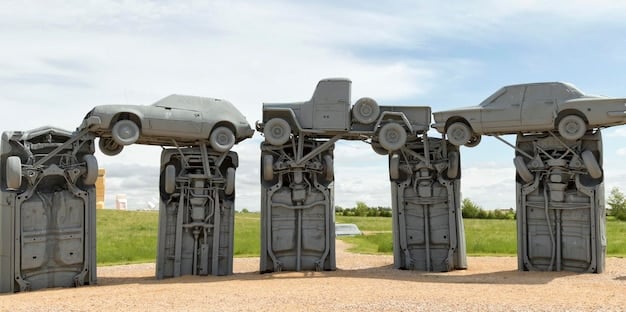
Creating Phantom Armies: Operation Fortitude
Operation Fortitude, a key component of Operation Bodyguard, focused on convincing the Germans that the main invasion would target the Pas-de-Calais region, far to the east of Normandy. This involved creating a fictitious army, complete with inflatable tanks, dummy aircraft, and fabricated radio traffic, to simulate a large military build-up.
- Diverting German attention from Normandy.
- Weakening the defenses of the actual landing sites.
- Gaining a crucial element of surprise.
The success of these deception operations played a significant role in the overall success of D-Day. By fooling the enemy, the Allies were able to achieve surprise and concentrate their forces in Normandy, giving them a decisive advantage during the initial stages of the invasion.
Airborne Operations: Securing the Flanks
Airborne operations were essential for securing the flanks of the landing zones and preventing German reinforcements from reaching the beaches. These operations involved paratroopers and glider-borne troops landing behind enemy lines to capture key objectives and disrupt German defenses.
Paratrooper Landings and Their Objectives
Paratroopers from the US 82nd and 101st Airborne Divisions, as well as the British 6th Airborne Division, were dropped behind enemy lines on the night before D-Day. Their objectives included capturing bridges, disrupting German communications, and securing key crossroads.
Glider-Borne Assaults: A Silent Invasion
Glider-borne troops played a vital role in securing key objectives, such as the Caen Canal Bridge (Pegasus Bridge) and the Orne River Bridge (Horsa Bridge). These troops landed silently in the early hours of D-Day, surprising the German defenders and capturing the bridges intact.
- Securing crucial bridges and crossroads.
- Disrupting German reinforcement efforts.
- Creating confusion and disarray behind enemy lines.
The airborne operations were essential in securing the flanks of the landing zones and preventing German reinforcements from reaching the beaches. These operations, though fraught with risk and challenges, played a significant role in the overall success of D-Day.
Engineering Innovations: Clearing the Obstacles
The Normandy beaches were heavily defended with obstacles designed to impede the Allied landings. Clearing these obstacles was a crucial task, requiring innovative engineering solutions and the courage of specialized engineering units.
The Development of Specialized Equipment
The Allies developed a range of specialized equipment for clearing obstacles, including the Churchill AVRE (Armoured Vehicle Royal Engineers) and the Sherman Crab mine flail tank. These vehicles were designed to breach defenses, clear mines, and create pathways for the advancing troops.
The Bravery of the Royal Engineers and US Navy Combat Demolition Units
Royal Engineers and US Navy Combat Demolition Units (NCDUs) played a vital role in clearing obstacles under heavy fire. These brave men worked tirelessly to remove mines, barbed wire, and other defenses, allowing the Allied forces to advance inland.
- Creating pathways for advancing troops.
- Neutralizing mines and explosives.
- Reducing casualties among landing forces.
The engineering innovations and the bravery of the Royal Engineers and US Navy Combat Demolition Units were instrumental in overcoming the formidable defenses on the Normandy beaches, allowing the Allied forces to break through and begin their advance into occupied Europe.
Communication and Coordination: The Backbone of Success
Effective communication and coordination were vital for the success of D-Day, given the complexity of the operation and the vast number of units involved. Innovative communication technologies and well-defined command structures were essential for maintaining situational awareness and coordinating the efforts of the Allied forces.
The Use of Radio Communication
Radio communication played a critical role in coordinating the actions of the Allied forces. Radios were used to transmit orders, report enemy movements, and request support from artillery and air assets. However, radio communication was also vulnerable to interference and interception, requiring careful planning and security measures.
The Importance of Well-Defined Command Structures
Well-defined command structures were essential for coordinating the efforts of the Allied forces. Clear lines of authority and communication ensured that orders were effectively transmitted and executed, and that units could respond quickly to changing circumstances.
- Facilitating rapid decision-making.
- Ensuring effective coordination of efforts.
- Maintaining situational awareness.
The effective communication and coordination of the Allied forces were essential for the success of D-Day. By maintaining situational awareness and coordinating their efforts, the Allies were able to overcome the challenges of the invasion and secure the Normandy beaches.
| Key Point | Brief Description |
|---|---|
| 🚀 Amphibious Warfare | Specialized landing craft and DD tanks enabled successful beach landings. |
| 🎭 Deception Operations | Operations like Bodyguard and Fortitude misled Germans about the invasion target. |
| 🪂 Airborne Operations | Paratroopers secured flanks and disrupted German reinforcements. |
| 🚧 Engineering Innovations | Specialized equipment and brave engineers cleared obstacles on the beaches. |
Frequently Asked Questions
▼
The main objective of Operation Overlord was to liberate Western Europe from Nazi occupation by establishing a secure foothold on the continent through the invasion of Normandy.
▼
Deception operations, such as Operation Bodyguard and Fortitude, misled the Germans about the location and timing of the invasion, causing them to misallocate resources and weaken their defenses in Normandy.
▼
Airborne operations secured the flanks of the landing zones, disrupted German reinforcements, and seized key objectives behind enemy lines, creating chaos and preventing a swift counterattack.
▼
DD tanks were Sherman tanks modified to “swim” ashore and provide immediate fire support. They were used to suppress German defenses during the initial stages of the landings, although their effectiveness varied by beach.
▼
Communication and coordination were vital due to the operation’s complexity and the numerous units involved. Effective communication allowed for rapid decision-making, situational awareness, and coordinated efforts, ensuring the invasion’s success.
Conclusion
The success of D-Day was a testament to the innovative tactics, meticulous planning, and the extraordinary bravery of the Allied forces. The combination of amphibious warfare strategies, deception operations, airborne assaults, engineering innovations, and effective communication and coordination allowed the Allies to overcome the formidable defenses of the Normandy beaches and begin the liberation of Europe.


